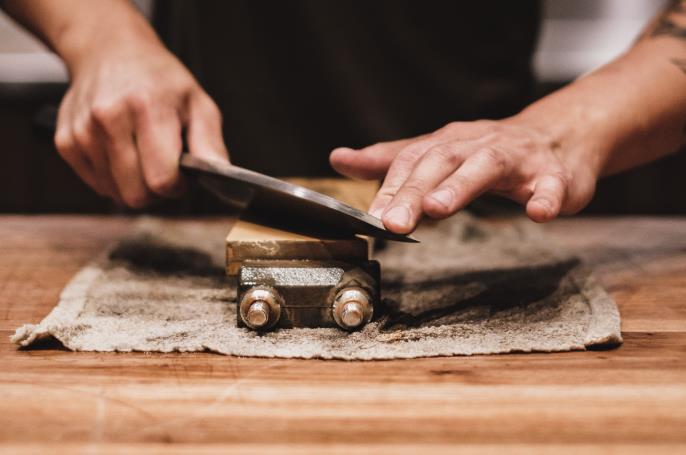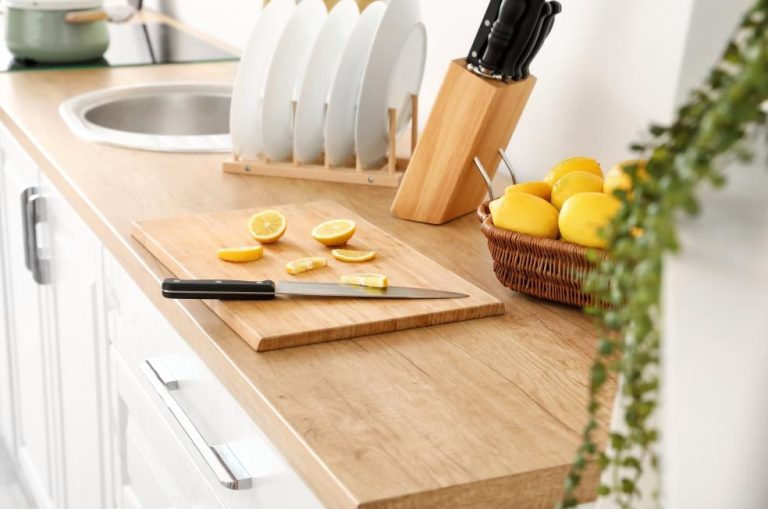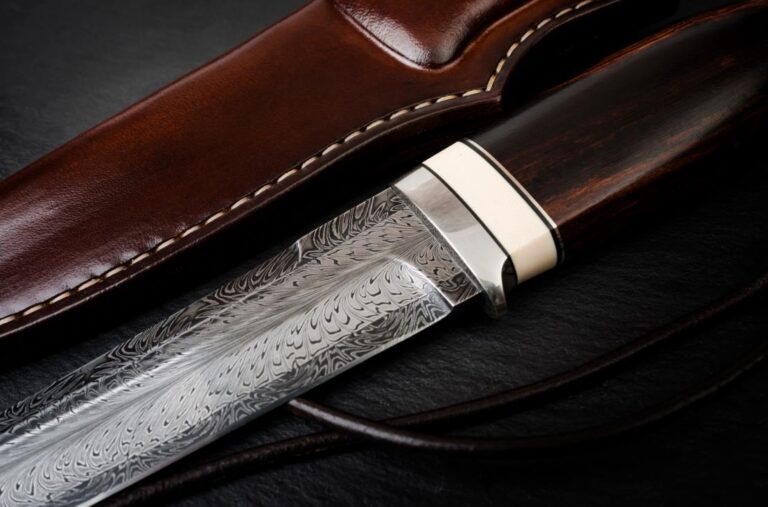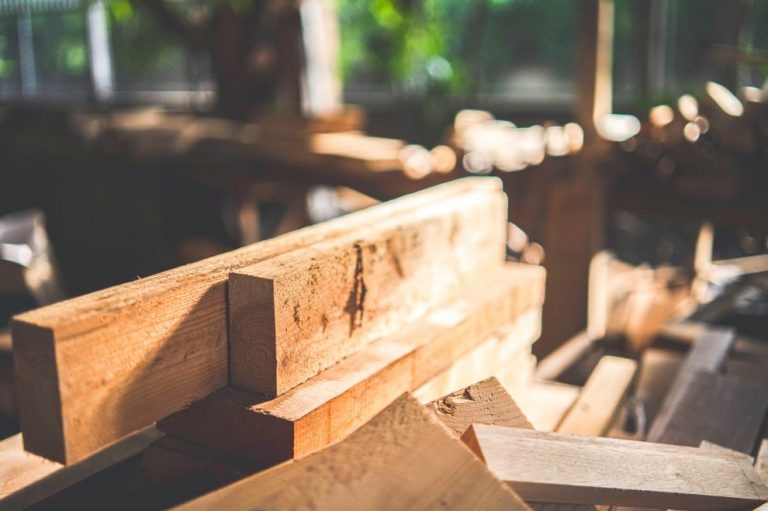The sharpening angle is crucial for tuning the knife’s cutting performance. It’s an important detail every beginner sharpener needs to familiarize themselves with for optimal results. Otherwise, the edge will be sharp but chip easily or struggle even cutting an apple while being indestructible.
The sharpening angle refers to the angle in which the cutting edge is held when sharpening. There isn’t a best angle for knives, but an appropriate range. These come down to the knife’s purpose, blade thickness, material, and user preference.
Here is everything you need to know about knife sharpening angles, the best angle for different cutlery, and ways to find a sharpening angle through various methods.
How does the sharpening angle affect cutting performance?
As the sharpening angle goes lower, the sharper the edge becomes. However, this sharpness comes at the expense of durability. Razor blades are good examples of this. They are incredibly sharp with their acute angle at 7 to 10 degrees but so fragile that they break easily.
On the flip side, obtuse sharpening angles create a robust cutting edge. For example, cleavers are sharpened at 25 to 30 degrees. This forms a strong edge that hacks through rather than cutting delicately.
These are extreme examples, though. Most kitchen knives have a sharpening angle between 15 and 25 degrees. Pocket knives, on the other hand, have a more durable cutting edge sharpened at 20 to 25 degrees.
Having said all these, sharpening a knife at a higher angle makes it stronger but decreases sharpness and vice versa.
Buy Wholesale Knives and Start Scaling up with Us Today
Contact us and connect with a sales rep to get a free quote.
What’s the best sharpening angle (for a chef’s knife)

The uses of chef’s knives require them to have a sharp yet durable cutting edge to tackle various cutting tasks.
The all-purpose nature of chef’s knives makes them lean towards higher sharpening angles. The best sharpening angle for a chef’s knife is between 20 and 25 degrees. This, however, depends on the steel used for forging the blade and heat treatment.
Japanese kitchen knives for all-purpose use, like Gyuto and Santoku, are sharpened at acute angles, anywhere from 15 and 20 degrees – sometimes even less. These are due to the hardness and sharpness of the steel used for making the blade.
Keeping this in mind, cooks can tune the cutting edge of their knives to their liking. However, acute angles don’t work with all blades. The blade needs to have enough strength to withstand permanent deformation when sharpening.
The following list is a representation of what to expect from a chef’s knife sharpened at different angles.
- 25 degrees: A durable edge that can withstand powerful blows, but not as much as a meat cleaver. It’s ideal for cutting dense ingredients and occasionally cleaving small poultry bones.
- 22 degrees: Similarly, a chef’s knife sharpened at this angle is sturdy, but bones and other highly dense ingredients should be avoided.
- 20 degrees: Chef’s knives sharpened at this angle can slice, dice, and mince foods delicately without chipping. It’s a good sharpening angle for balance between durability and sharpness.
- 17 degrees: This sharpening angle creates a fine blade that can slice foods thinly but is prone to chipping when cutting anything denser than a watermelon rind.
- 15 degrees: A chef’s knife sharpened at this angle is extremely sharp, perfect for making paper-thin slices and delicate work on soft ingredients, like chicken breasts. Yet, so flimsy that it can break under moderate stress.
The chef’s knife is just one among many. Learn more about the sharpening angles of other kitchen cutlery and outdoor knives below.
Different types of sharpening angles for different types of knives

As the knife’s purpose changes, so does the appropriate sharpening angle. The cutting edge of some blades goes under more stress, like boning knives, while some simply slice through, like filet knives.
With everything discussed in this article so far, you can guess what sharpening angle works best for specific knives.
A sushi knife needs to have an acute angle for thin slices. A boning knife should have a sharp edge but not too flimsy that scraping meat from the bones will cause damage. An EDC knife should have more durability than sharpness, and so on.
Although the sharpening angle is determined by user preferences, there is an appropriate range for different types of knives. Here’s a chart giving you the best sharpening angle ranges for various knives.
| The type of knife | Best sharpening angle range |
| Japanese specialty knives Filet knife | 15 to 17 degrees |
| Carving knife Boning knife Slicing knife Chef’s knife Utility knife | 17 to 22 degrees |
| Pocket knife Tactical knife Survival knife | 22 to 25 degrees |
| Cleaver | 25 to 30 degrees |
Any knife can be sharpened at a much different angle than the given ranges above. It comes down to the specific uses your customers aim to get from a knife.
If you don’t offer sharpening services, it’s good to remind your customers about the importance of these angles. A simple chart like the one above, based on the types of knives you sell, will suffice.
What is knife bevel?
Before we explain how to find the sharpening angle of a knife, let’s cover the knife bevel. This will give us the foundation we need to find the sharpening angle of any knife.
The knife bevel refers to the ground part of the blade that forms the cutting edge. A careful look at the knife’s cutting edge will reveal it. Most kitchen knives and almost all pocket knives have a double bevel, meaning they are ground on both sides. Therefore, you sharpen both sides of the blade.
Single bevel knives
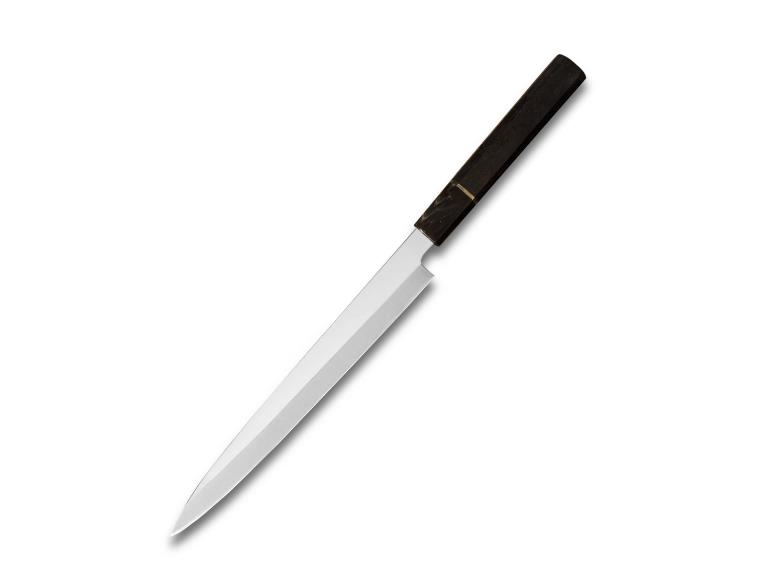
Some kitchen knives, Japanese cutlery, to be more particular, have a single bevel edge. Knifemakers create the cutting edge of these knives by grinding only one side. The opposite side has design elements that help with other things, such as food separation.
How the cutting edge of single bevel knives is formed changes the sharpening process entirely. It isn’t as straightforward as saying sharpening double bevel knives on both sides and single bevel knives on one side.
Not every sharpener can give the right edge to a single bevel knife, even expert sharpeners. The single bevel Japanese kitchen knives follow a specific three-step advanced sharpening technique, involving uraoshi, kireha, and kobatsuke.
- Uraoshi: Uraoshi is the flat rim covering the concave part of the blade. Sharpening this area is done carefully and requires a polishing stone. Rather than contributing to sharpness, this process improves the blade’s strength, aligns the unstable sections, and creates an air pocket that prevents slices from sticking.
- Kireha: Kireha is the primary bevel. It’s where the knifemaker initially grinds the blade to create the cutting edge. Sharpening this part of the edge is the same as any other knife.
- Kobatsuke: Also known as Koba, Kobatsuke is the micro bevel on Kireha. It creates a secondary bevel, taking the knife’s sharpness even further. When sharpening Kobatsuke, it must be done from heel to tip, while other parts can be sharpened section by section – from heel to belly and belly to tip.
Like sharpening any other knife, the sharpening angles of kireha and kobatsuke can accommodate the preferences of different users. Yet, as with other Japanese kitchen knives, they are sharpened at acute angles.
Buy Wholesale Knives and Start Scaling up with Us Today
Contact us and connect with a sales rep to get a free quote.
How to find a sharpening angle?
A goniometer is the most accurate way to measure the sharpening angle. Assuming you don’t have this instrument, here are some creative ways to find an accurate sharpening angle.
Paper wedge
Folding a paper to make a wedge gives you roughly a 22.5-degree angle. It’s an easy way to find the ideal sharpening angle for most chef’s knives.
- Fold a square paper into a triangle.
- Fold the paper again straight side away from you – similar to making a paper plane.
- Place the wedge on the whetstone and gently rest the blade on the paper without applying pressure.
- You can then take the paper away and start sharpening.
Coins
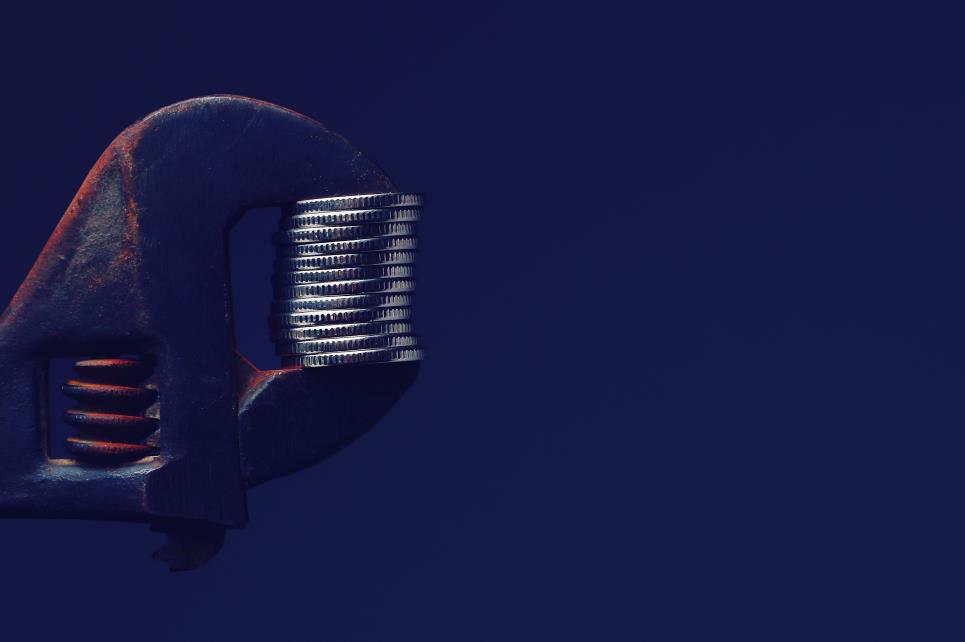
Using an X number of quarters to find a sharpening angle is a common practice. However, there isn’t a specific number of coins you can use for every knife. The wider the blade, the more coins you’ll need to position the knife at a specific angle.
Simply stack the coins and touch the blade’s spine to rest the knife. You can then remove the coins and begin sharpening.
Here is how many quarters to stack to get a 20-degree sharpening angle for a chef’s knife.
- 7 quarters: 15-degree angle
- 8 quarters: 17.5-degree angle
- 9 quarters: 20-degree angle
- 10 quarters: 22.5-degree angle
This method applies to most chef’s knives. However, the narrower the blade, the fewer coins you will need to use. For example, you will only need 4 to 5 quarters to sharpen a paring knife at 20 degrees, while it takes up to 9 for a chef’s knife.
iPhone level app
The iPhone’s built-in Measure app has a level feature you can utilize to find a sharpening angle.
- Launch the Measure app and select “Level.”
- Position your phone on the whetstone and make sure it’s sitting at 0-degree.
- Slowly lift your phone to get the desired angle.
- Slide the knife under your phone and keep the knife at the same angle.
Before using your phone, make sure it’s in its protective case. Otherwise, the whetstone’s surface can scratch your phone.
Final words
The sharpening angle is vital to accommodate the knife’s purpose. Sharpening a knife at an incorrect angle will lead to a decline in the cutting performance. Remind the correct sharpening angle to your customers before they walk away with a whetstone.
We have an abundance of sharpening tools catered for both average and professional users. You can order dual-sided whetstones or kits with angle and honing guides included.
Browse our wholesale sharpening tools from here. We can help you with custom packaging and print your store logo on the products to match your store’s image. Click here to request a quote for our products and services.
